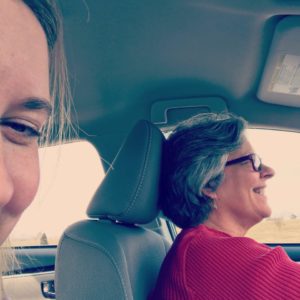This year in fifth grade Bridges class, we used the book Seedfolks by Paul Fleischman to learn about our own learning. The story, which is set in a run-down neighborhood in Cleveland, Ohio, is told in pieces by 13 different characters. Each character is from a unique background and has a different perspective on the events taking place in the community, all of which center around the creation of a community garden. The garden, the neighborhood, and the people are gradually transformed as the story takes root and the members of the community begin to have more reasons to interact with and care about each other.
As we made our way through each new chapter (and character), we practiced noticing which kinds of thinking we were doing in order to fully understand the story. We began with three Thinking Skills, gradually introducing new ones until we were working with eight specific skills. Over time, students began to notice that they used these kinds of thinking everywhere.
Main Idea: We are separating essential information from extraneous details almost anytime we take in information, even in conversations. We also use it when we share information, when we make decisions about which thoughts or other pieces of information are the most relevant to include.
Visualizing: Very often, we make pictures in our minds as we listen, think, talk, or read. Sometimes, we can try to do this in an intentional way to build stronger associations or memories.
Sequencing: Any time we put events, materials, or information in order or perceive a sequence or order, we are using this type of thinking. Schedules, timelines, math operations, story structure, recipes, instructions, portfolios, and many other situations call on our sequencing skills all the time.
Perspective: At times, it can be difficult to imagine things from a perspective different from our own. It can also be incredibly useful to practice doing this, and to consider what makes our perspectives different. We use this skill when reading, watching movies or TV shows, interpreting history and current events, interacting with others, and in order to better understand ourselves.
Making Connections: When we notice the ways our experiences and thoughts are connected across different parts of our lives, we are building bridges of understanding. For example, we might hear a news story about a wildfire producing lots of smoke that reminds us of our studies of air quality in Science class. When we notice ourselves making those connections, we can start to look for them in less obvious places, where they may actually be hiding out in abundance!
Figurative Language: We use language in almost all areas of life, and understanding and using that language effectively often requires us to discern (and use) nonliteral (or figurative) language. Noticing when and how we interpret language strengthens our metalinguistic abilities (our awareness and interpretation of how and why we use language) as well as our metacognition, comprehension, and expression skills.
Making Inferences: In order to understand much of what goes on around us, we piece together information and fill in any missing pieces with our own prior knowledge. Much of our real-world and academic knowledge may come to us through inference, rather than relying on every single piece of information to be directly stated in full detail. We also depend on others to make inferences on our behalf, to read our cues. We do it so much that it can be difficult to notice!
Predicting: We make predictions in order to plan ahead. We might also find ourselves predicting the outcome of a choice or behavior, the winner of a game, the ending of a book or movie. Thinking in this way, and noticing ourselves doing it, and doing it on purpose, can help us be more engaged with information and more anticipatory or strategic in our thinking.
Not only did students notice themselves using these skills in multiple settings, they also began to notice that they often use multiple types of thinking simultaneously. This was especially evident when we were reading together from Seedfolks. As each new Thinking Skill was introduced, students made a visual representation of that skill on an index card. As we read the book, they would hold up the cards that represented the Thinking Skills they noticed themselves using throughout the chapter. As you’ll see from the photos, they were using many of them in a constant way, so they got creative with how they displayed them. By the end of the school year, they literally had their thinking caps on!
We began to document some of the ways we were using our thinking skills both in and out of the classroom, and to keep a tally. This way, we could set challenges to notice the ones that weren’t as easy or as obvious, like making inferences. In doing this with the class, I realized my own metacognitive routines could use some reinforcement, and I am now watching out for my own inferences. I look forward to reporting one back to the class soon!
Which Thinking Skills do you notice yourself using more often? Which ones are the hardest to notice? How do you know when you are making an inference, or using another skill? Even thinking about that question is great metacognitive practice. If you need some pointers on metacognition, let the fifth (soon to be sixth) grade lead the way!
By Kerrie Lynn, Middle School Learning Specialist and general learning enthusiast.

